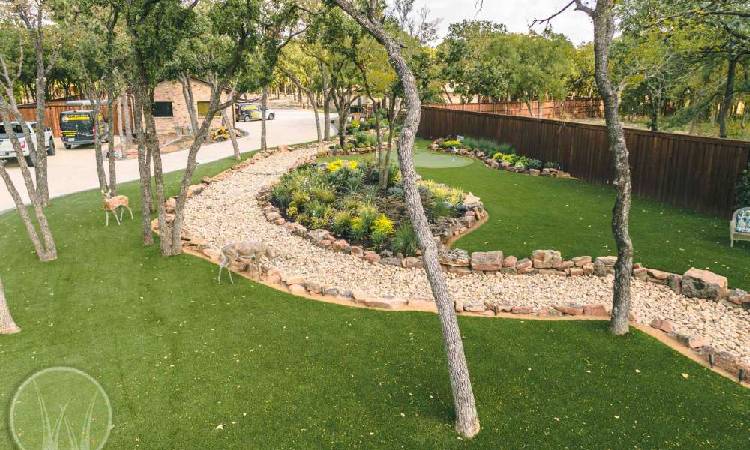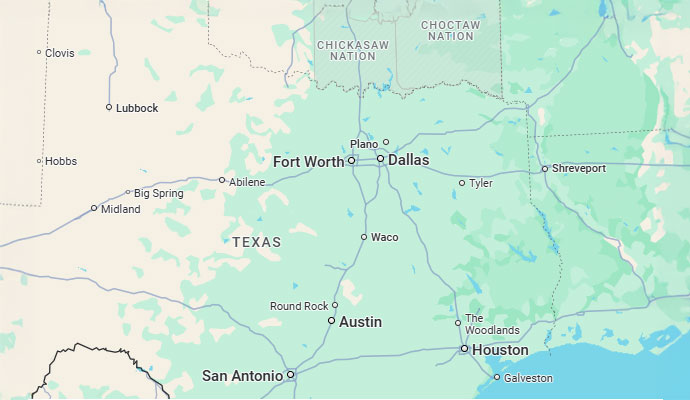
How To Care For And Maintain Artificial Grass
Homeowners and businesses alike are familiar with what it takes to maintain a natural grass yard or common area. The daily, weekly, monthly, and yearly tasks include watering, mowing, soil amendments, fertilizers, weed and pest control, aeration, dethatching, seeding, patching, and more. Artificial grass or Astroturf, as it has been famously called for decades, also needs care and maintenance, but not nearly as much as natural grass needs. Although it is fairly simple, straightforward, and not very time-consuming to maintain artificial turf, there is still some care and maintenance needed for synthetic grass to look its best. Even though synthetic turf is sometimes called fake grass, there is nothing fake about the time, money, and effort it saves versus taking care of natural grass.
Caring for and maintaining artificial grass is a cakewalk compared to the time, patience, and expense of planting, nurturing, mowing, and weatherproofing that is needed to properly develop a natural grass lawn. Artificial turf is so much easier. Some tips for taking care of and maintaining a synthetic grass lawn or common area are listed below:
- 1. Turf cleaning: Utilizing a leaf blower, rake, or a stiff brush, it’s good for synthetic turf to have any twigs, leaves, or other debris removed. Not only does it help keep up appearances, but it also makes sure that stains or tears don’t have a chance of happening.This can be especially important after wind, hail, or thunderstorms hit and a lot of debris may have been knocked off trees and bushes.
- 2. Stain Removal: Stains can set in quickly on man-made materials, even though artificial grass is fairly forgiving. Treat stains promptly, if possible, so they don’t become permanent. The use of a mild detergent mixed with water will generally take care of the stain if scrubbed gently with a soft brush or cloth. Be sure to rinse the area thoroughly with water when finished.
- 3. Rinse: Giving synthetic grass an occasional rinse with a hose and spray nozzle will remove any dust, dirt, pollen, or grime that may have settled on the surface and within the grass blades. If pets frequent the area, a more frequent and robust rinsing may be needed to wash away built-up urine deposits since they can potentially harm artificial grass if left too long.Rinsing with water also removes any smell from urine, especially during warm summer months.
- 4. Pet Waste: If pets utilize the pet turf, be sure to remove solid waste each week and rinse the area thoroughly where urination occurred, when possible, to prevent any odors. A pet-specific artificial grass cleaner or a mixture of vinegar and water is perfect for eliminating any unwanted odors.
- 5. Weed Prevention: Even though artificial turf is designed to be weed-resistant, a few weeds may occasionally sprout between the grass blades. Manual removal or weed killer can be used to eliminate any unwanted plant growth. It’s always good to test an inconspicuous spot of turf for any chemical reaction to make sure the chemicals and synthetic turf are compatible.
- 6. Turf Brushing: By cross-brushing artificial grass or Astroturf regularly, the fibers will maintain their upright position and matting will be avoided. A power brush, hard-bristled broom or a stiff plastic rake can be utilized for this purpose.
- 7. Sharp Objects: Artificial grass is very b and durable, but it can still be damaged. By keeping sharp or pointed objects away from artificial turf, tears and cuts in the turf can be avoided. Certainly, a game of metal pointed yard darts is not recommended in an area that enjoys synthetic grass.
- 8. Chemicals: Harsh or caustic chemicals such as those that are petroleum-based and found in some pesticides or fertilizers can damage artificial grass fibers, so it is a good idea to test an out of the way area of the turf first before using anything on the rest of the surface.
- 9. Heavy Items: Avoid placing heavy equipment, furniture, or landscaping accents on synthetic grass for a long period. This will help maintain the look of the grass. Leaving heavy items on artificial grass surfaces for too long can lead to indentations and possible turf damage.
- 10. Heat: Embers from fireplaces, grills or fireworks can all damage synthetic grass. Still burning cigarette butts can cause damage as well. It’s a good idea to put a good-sized stone or brick apron around any grills and be aware of any reflection off windows that concentrate on a particular area on the artificial grass so reflection burning doesn’t occur.
- 11. Inspection: Being aware of how the turf is worn is a great way to stay ahead of any potential problems. Inspecting the artificial turf from time to time will head off any issues and repairs can be made before more damage occurs.
- 12. Drainage: For synthetic turf to last as long as possible, proper drainage is important. If water pools for too long, additional drainage solutions may be needed to assist in proper water runoff.
- 13. Cold Weather: If the synthetic grass will be placed in an area that gets lots of ice and snow, protection may be needed to make sure the turf doesn’t ice over and become a dangerous skating rink. Plastic and ice make a slippery combination.
Through the implementation of the tips above, artificial grass can realize its maximum lifespan and maintain an attractive look for many years. There is a definite difference between synthetic grass and natural grass; from the look – to the feel – and everything in between, but if a turf is desired that stays green year-round, doesn’t require sunshine, watering, mowing, edging, fertilizer, pest, weed or fungal control, aeration, soil amendments, dethatching, seeding, patching, etc., then synthetic turf may be the way to go.
There is no doubt that artificial grass is a crowd-pleaser. It is easy to maintain, lasts for many years, and is more durable and less messy than natural grass. And in the long run, synthetic turf is much less expensive than professionally maintaining mother nature.


